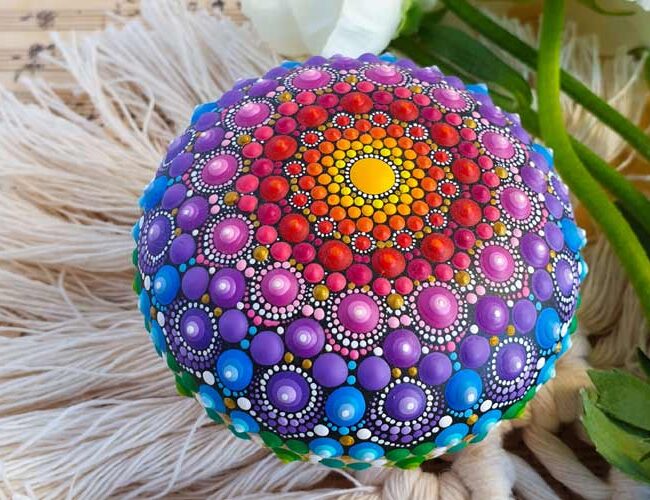Mandala Art: History, Patterns, and Healing Properties to discover
Mandala art has been used for centuries as a form of spiritual and artistic expression. The intricate patterns and symbols found in mandalas have been known to have healing properties, promoting relaxation, stress relief, and mindfulness. In this post, we’ll explore the history of mandala art, its patterns and symbols, and its potential for healing.
What is mandala ?

The word “mandala” comes from the Sanskrit language and means “circle” or “center”. Mandalas are typically circular in shape and are comprised of various geometric shapes, patterns, and symbols that are arranged around a central point. The circular design of a mandala is considered to be a powerful and sacred symbol that represents wholeness, completeness, and unity.
The circle in the center of a mandala is often referred to as the “center point” or “bindu”. This point is considered to be the starting point from which the mandala is built outward. It is also believed to be a point of spiritual energy and power that is able to help individuals connect with their higher selves and the divine.
In many spiritual traditions, the circular design of a mandala is thought to represent the cyclical nature of life, death, and rebirth. The circle is also believed to be a symbol of the eternal nature of the universe and the interconnectedness of all things.
Additionally, the circular design of a mandala is often associated with the idea of a journey or path. As one moves from the center of the mandala outward, they are said to be embarking on a journey of self-discovery and spiritual growth.

Did you know ?
Humans have an innate need to stare at circular shapes, as evidenced by the preference of infants as young as one week old for circles over other shapes. The circle is the first shape kids learn to draw after scribbling randomly when they first start out. Drawing a circle as an adult allows us to reconnect to our childhood memories. Making a mandala can aid individuals in regaining self-awareness and understanding where they belong in the universe.
Mandalas are still used as an art form today. One of the most easiest ways for enjoying mandala art is via a kaleidoscope. Some artists use recycled records and compact discs to form the basis of their mandalas, while others use clay, canvas, dinner plates or even fabric.
History of Mandala Art

Mandalas have been used in various spiritual traditions throughout history. The earliest evidence for Mandalas can be found in Buddhist religious artworks and temples.
When Buddhist monks took the Silk Road to travel to other countries, they spread the Mandalas to other regions, among other Buddhist influences. These monks took the Mandalas with them and taught people in other parts of Asia how to make them. As a result, the designs and artworks had spread to Tibet, China, and Japan by the 4th century.
Mandalas all over the world in religions
Buddhism
A Mandala is a representation of the universe used in Buddhism. It can be created as a traditional painting or as a scroll painting to hang on a wall. Using colored sand, it can also be produced on a table.
Mandalas can be created with precious jewels, flowers, dyed rice, colored stones, or colored sand on a two-dimensional surface. Because of the high level of expertise needed to create the mandala’s exquisite details, colored sand is thought to be the most effective material.
The mandala, in the eyes to a Tibetan Buddhist, represents the structure of exaltation, the inspirational three-dimensional world of Buddhahood, constructed in a pure imagination. This realm is achieved through a heightened state of clarity and stability of visualization.
In Tibetan folklore, it is thought a great blessing just to see a well-made mandala, since the impression goes deep into the subconscious.

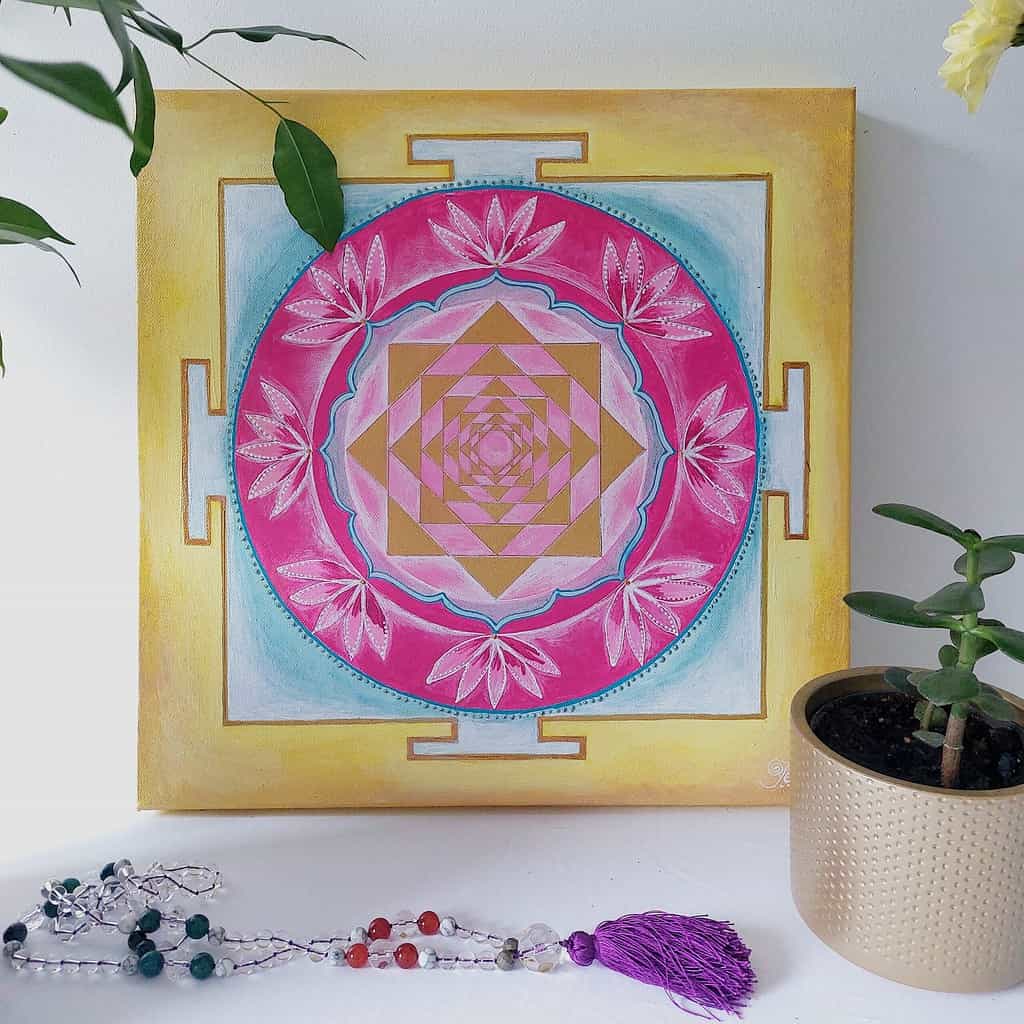
Hinduism
The Hindu Mandala features four T-shaped gates and is square in design. In the direction of the Mandala’s center, they expand. Hinduism refers to this design as a Yantra, despite the fact that they are smaller than conventional mandalas and contain only two colors. Take a look at my Venus Yantra, that I created.
Christianity
In Christianity, there are many objects that remind people of mandalas. The Celtic Cross, Rose Windows, Crown of Thorns, Rosary, Halo, and others are a few of them.


Mayan civilization
The Wheel of Time or Kalachakra Mandalas are a part of Mayan civilization, and they resemble Tibetan Buddhist sand paintings quite a bit. There are 260 segments in this wheel-shaped Mandala. They had been used by the Mayans for ritualistic purposes and for calculating the length of the nine-month cycle. Pregnancies, the time required for particular crops to be grown, and certain seasons of the year, including spring and fall, that occurred within a 260-day window may all be indicated by this period.
Mandala Patterns and Shapes
Mandala patterns are intricate and symmetrical, often featuring repeating circles, squares, and triangles. The patterns are designed to draw the viewer’s eye inward, promoting a meditative and calming state of mind.
Intrested to know more about mandala symbols and their meaning ? Check out this post.

Healing Properties of Mandala Art
Mandala art has been shown to have numerous healing properties, both for physical and mental health. The act of creating or coloring mandalas can promote relaxation, reducing stress and anxiety levels. It can also be a form of mindfulness practice, helping to improve focus and attention.
Modern-day medicine believes that mandalas have become a great healing tool in inducing tranquillity of the mind. Mandalas help in boosting the immune system, enhancing concentration, reducing pain, and promoting good sleep.
In addition, the symbols and patterns found in mandalas can have specific healing properties. For example, the circle in the center of the mandala can represent the self, promoting self-awareness and self-reflection. The patterns and colors can also be used to represent different energy centers in the body, promoting balance and harmony.

Mandala Meditation
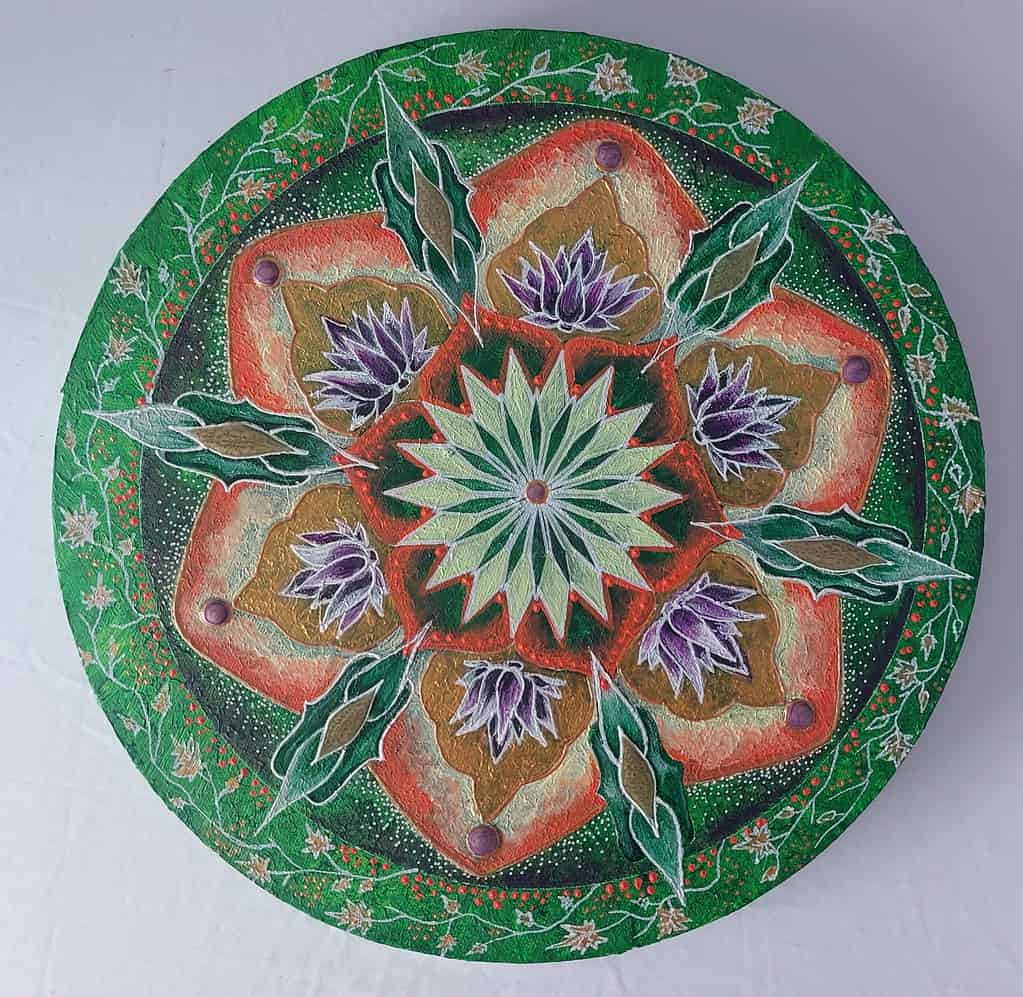
Mandalas are a type of meditation. We are thought to be composed of energies and vibrations that move through us in all different colors and shapes, generating imbalance and disharmony. Mandala meditation can be very helpful in bringing harmony and peace by balancing energies and vibrations in our bodies.
When practicing mandala meditation, one starts by focusing on the center of the mandala’s circle. You can ‘enter’ the Mandala from this point on and start your adventure through the symbols. You should maintain your attention and avoid getting distracted as you observe the mandala’s colors and patterns. You can start to feel at ease and begin to receive intuitive messages if you keep breathing and relaxing as you go deeper and deeper into the Mandala.
Mandala Therapy
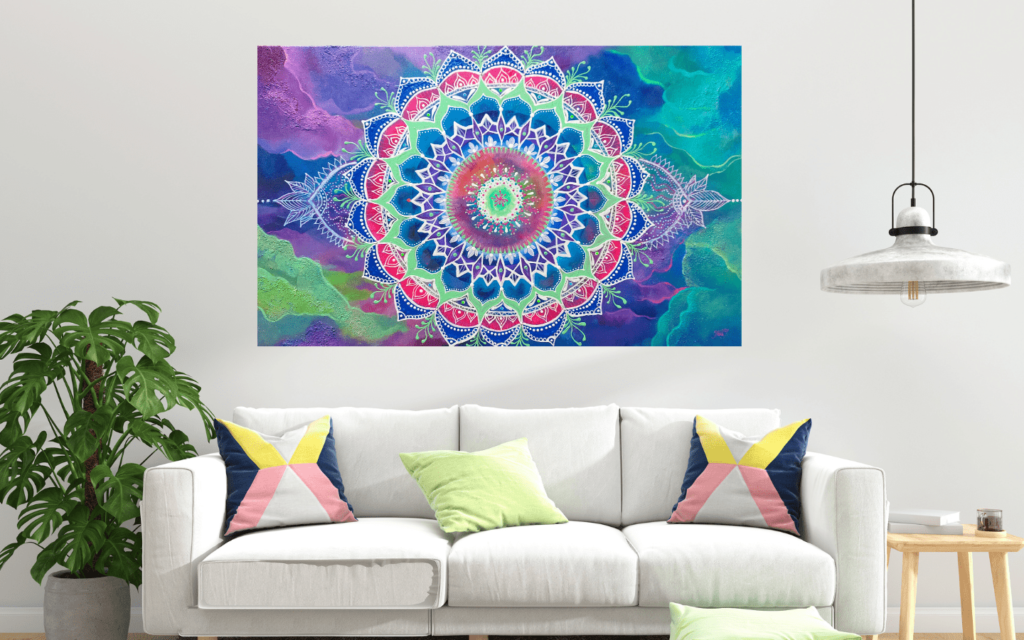
Mandala therapy is a form of art therapy that uses mandalas as a tool for healing. In mandala therapy, patients create or color mandalas as a way to explore their emotions, thoughts, and beliefs.
Colouring requires both hemispheres of the brain to remain focused. This helps all the areas of the brain to work in a balanced way. Intricate designs of the mandalas stimulate the brain to aesthetically choose the colour. Colouring mandalas help in activation of both analytical and creative parts of the brain, increases problem-solving skills, refines cognitive skills and produces inner strength.
This can be especially helpful for patients with anxiety, depression, or trauma, as it allows them to express themselves in a nonverbal way.
In conclusion, mandala art is a beautiful and powerful form of expression that has been used for centuries for its therapeutic and healing properties. The intricate patterns and symbols within a mandala can help calm the mind and promote relaxation, making it a perfect addition to any home or office space.
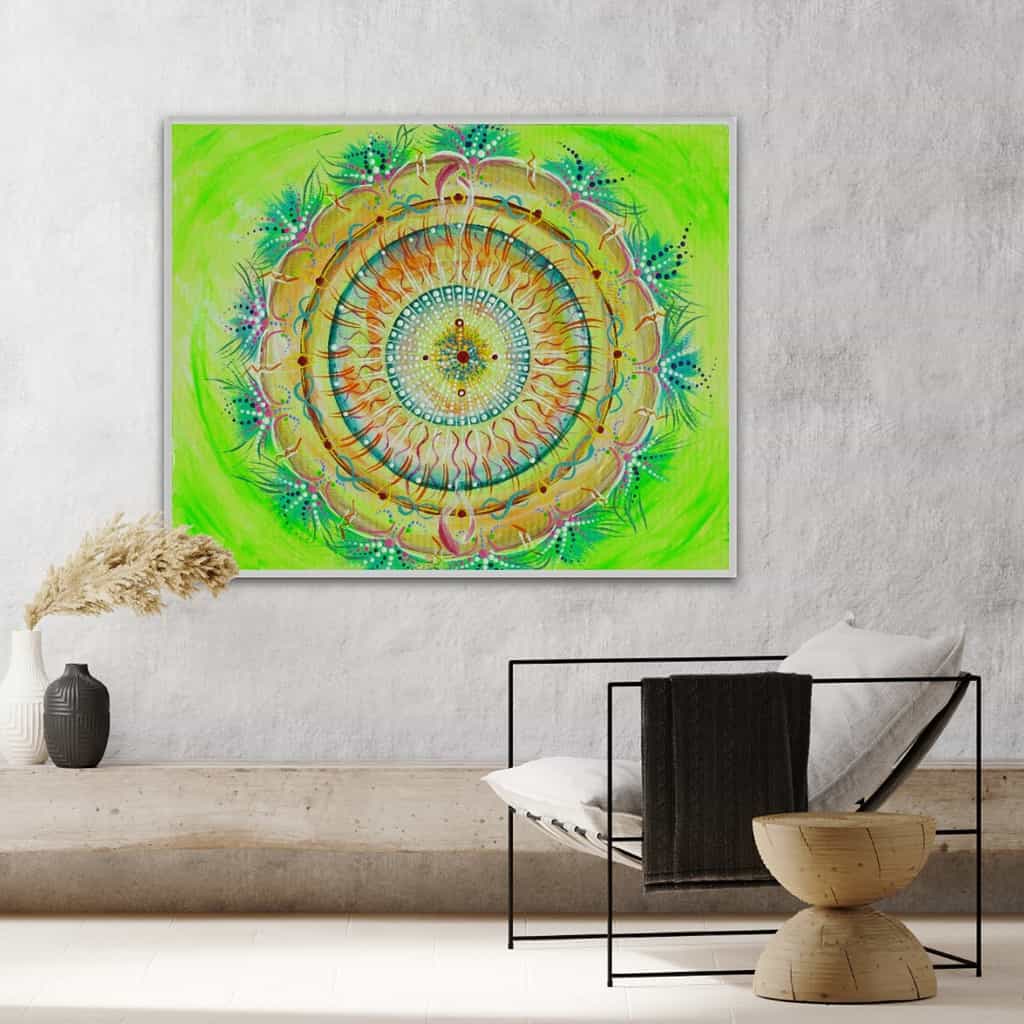
I create unique and personalized mandalas that are tailored to your specific needs and preferences. Whether you’re looking for a mandala to promote healing or simply to add a beautiful piece of art to your collection, I can work with you to create something truly special.
So, what are you waiting for? Read more about custom mandala art that I create today and experience the therapeutic benefits for yourself. And if you’re interested in a custom mandala design, feel free to contact me to discuss your ideas and bring your vision to life.
If you would like to know more on how I create custom mandalas, check out this post.

